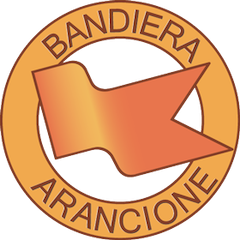Orvieto
Orvieto
Orvieto is one of the oldest cities in central Italy rich in history, art and culture. The beautiful Umbrian city is one of the most popular tourist centers due to its proximity to the area of Lake Bolsena. The origins of Orvieto are Etruscan, although the first settlements on this territory date back to the 9th century BC.
The city offers countless historical and artistic ideas and itineraries precisely by virtue of its ancient origins.The beautiful Orvieto is perched on a cliff overlooking the valley from above, offering truly suggestive landscapes.Its symbol par excellence is the Dome , an example of Gothic-Roman architecture, picturesque and colorful, full of extraordinary works of art. Inside the new chapel there are frescoes of refined beauty and brightness unique in their kind, moreover the sacred reliquary of the corporal, a famous goldsmith’s masterpiece executed in 1337-1338 by the Sienese Ugolino di Vieri, which houses the corporal which in 1263 was stained with the sacred blood symbol of the miracle of Orvieto. Another unmissable place in this city are the palaces of the Popes, austere thirteenth-century buildings dedicated to Pope Urban IV, Martin IV and Boniface VIII , the latter also called palazzo Soliano in which the Opera del Duomo museum .
Among the most interesting activities to be carried out in this beautiful town in Umbria, we recommend a visit to its basement. Il pozzo di San Patrizio , located next to the municipal gardens of the Albornoz fortress It is one of the wonders of the underground Orvieto. A 62 meters deep well with a diameter of 13.5 meters from which you can see the spiral staircase that wind in depth interspersed with 72 windows, which create a surreal atmosphere.
“Orvieto Underground ”is a journey into the underground city: a world to be discovered made up of tunnels and rooms dug deep into the tuff. Wells, quarries, laboratories and olive mills, very ancient, have guaranteed the survival of the inhabitants on the surface for millennia.
Orvieto is also rich in traditions; in addition to the religious functions and the exhibition of the holy relic, there is a historical procession that involves over 400 participants and the feast of the palombella, which has its origins in the fourteenth century. On this occasion, according to local popular custom, a dove is made to “fly”, tied to a crackling ray of firecrackers on a steel cable from the church of San Francesco Al duomo; the dove is then given to the first married couple of that day.
In the last few years a sort of “tuff path” has been developing which unites Orvieto with Civita di Bagnoregio and the Tufo Towns of Maremma (Pitigliano, Sorano and Sovana) on a tourist level. The common thread is this stone, an element dominated by the aforementioned areas.


